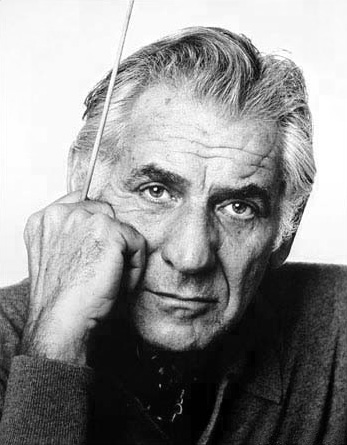
In the 1940s, Leonard Bernstein’s mentor Serge Koussevitzky, conductor of the Boston Symphony Orchestra, submitted his protégé to a long lecture on how a potentially great conductor should not dissipate his talents. Throughout the remainder of the decade, Bernstein concentrated on conducting, with composing and concert piano performances relegated to second place. Fortunately, he was never able to follow Koussevitzky’s advice for long.
Bernstein was just beginning his career as a composer and had not, as yet, settled into any single style. His “Opus One” was the Clarinet Sonata, a work deriving much of its inspiration from jazz. Around the same time, Bernstein was working on the Jeremiah Symphony, a decidedly “classical” work. For the rest of his composing career, Bernstein would vacillate between the two sides of his musical personality, producing Candide and West Side Story on the one hand, and the Mass and his symphonies on the other.
In 1943, when Jerome Robbins, then a dancer with the Ballet Theater (now American Ballet Theatre), was looking to make his name as a choreographer, he developed a scenario for a ballet about three sailors on a 24-hour shore leave in New York. Looking for girls, excitement and any kind of fun they could stir up, they find it all. The subject was perfect for the war years, when the city was swarming with sailors on leave. Hunting for a composer, Robbins was turned down by Vincent Persichetti who suggested that he approach Bernstein. Their collaboration, Fancy Free, debuted in April 1944 in the old Metropolitan Opera House, was a spectacular success both in choreography and music.
Realizing that the subject had further potential, Bernstein and Robbins teamed up with Betty Comden and Adolph Green for the book and lyrics, and by December 1944 had created On the Town with entirely new music. The show was the toast of the town, quickly becoming a classic. One of its numbers, “New York, New York,” is possibly one of the best-known songs from any musical. On the Town was the first American musical to feature African-American and white dancers side by side. Made into a film in 1949, it has enjoyed numerous revivals, including one featuring opera singers Frederica von Stade, Evelyn Lear, Thomas Hampson and Samuel Ramey.
The first dance is part of a dream sequence as Gabey (one of the three sailors) fantasizes about his girl, Ivy, during a subway ride to Coney Island. The music begins almost raucously, becoming romantic and slightly melancholy. The second dance is based on Gabey's song, "Lonely Town," as he realizes that the city that looks so easy and inviting from on board the ship, can be a lonely and daunting place. The third dance occurs as the finale to Act I of the musical and is a fantasy on "New York, New York."
Program notes by: Joseph & Elizabeth Kahn
